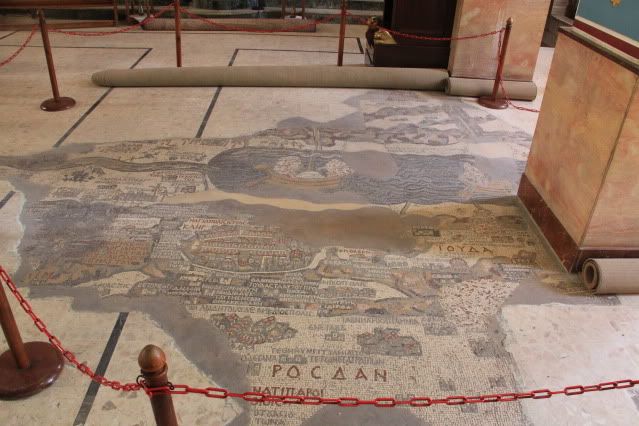Originally we planned to go overland from Turkey, through Syria and into Jordan. However, the violence taking place in Syria meant a change of plans, so instead we flew from Turkey direct to Amman. After a brief evening exploring Amman we set off early the next morning on a daytrip that would take us to Petra.
Our first stop was the Dead Sea, which at 400m below sea level is the lowest point on earth. Its incredibly high salinity (nearly 9x saltier than the ocean!) means that you bob on the surface like a cork – a very strange feeling! After spending over an hour in the water we continued on to Mt Nebo, where Moses first viewed the Promised Land and is now said to be buried. Despite the haze we could see across the Dead Sea to Israel and the town of Jericho from up here.
Our next stop was the town of Madaba which is famous for its mosaics. The highlight here was the Greek Orthodox St George’s church which is famous for its mosaic map – an amazing map on the floor of the church of all major biblical sites from Lebanon to Egypt. The mosaic was constructed in AD 560 but was only unearthed in 1884 and now contains only a third of the original 2 million+ pieces.
From here we continued south through Wadi Mujib (a spectacular valley sometimes called the “Grand Canyon of Jordan”) to Kerak and its ancient crusader castle. This huge castle was constructed in the 1140s and became a place of legend during 12th century battles.
We drove on until we reached the Dana Nature Reserve where we stopped for the spectacular views from the lookout and to buy tea from a couple of young boys in their shipping container café! Our last stop was Shobak Castle where we again admired the stunning views before continuing on to Petra to end a 14 hour long, but satisfying, drive!
- Posted using BlogPress from my iPad




























































